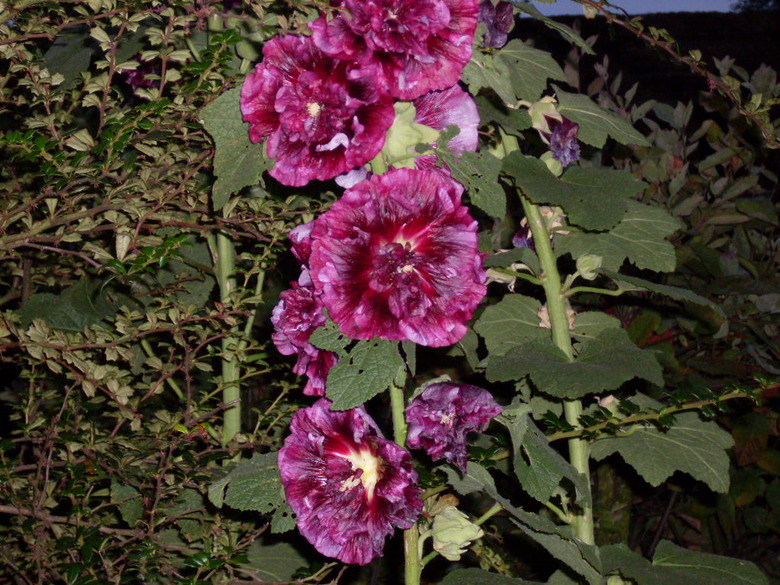How To Winterize Hollyhock
Things Needed
- Pruning shears
- Mulch
Tip
Proper summertime care will help your plants thrive during the dormant season. Mix nutrient-rich additives into the soil, such as compost or peat, to increase the organic content of the soil in the hollyhock flower bed. Hollyhocks grow quite tall, and should be protected from high winds to prevent the plant stem from snapping or bending. When a plant becomes extremely tall and gangly with fewer blooms, it's probably not receiving enough sunlight. Hollyhocks will propagate quite readily in the proper soil and light conditions. If you prefer to keep the plant contained, pull any new shoots as soon as they appear.
Hollyhocks tower above most other flowers in any traditional cottage garden. Some varieties can reach as tall as 8 feet. Hollyhocks have a tall center stalk that resembles a spike, with multiple flowers staggered up the stem. The stalk contains knobby green buds that will eventually burst into bloom with more flowers. Hollyhocks require very little care and preparation for the winter. However, there are a few things you can do to winterize your hollyhocks to help them thrive in your garden.
Step 1
Evaluate the condition of your hollyhock plant while the plant contains blooms and vibrant leaves. Look for rust spots on the leaves or dead areas that require pruning.
- Hollyhocks tower above most other flowers in any traditional cottage garden.
- Hollyhocks require very little care and preparation for the winter.
Step 2
Clip back any spotted leaves to reduce the incidence of a fungal infection during the growing season.
Step 3
Allow foliage to wither and drop to the ground as temperatures cool. As with many perennials, it's best to simply leave the foliage attached to the plant until spring. The only exception involves leaves infected with rust spots on fungus. Even dead leaves should be removed from the garden and discarded to prevent a recurrence.
Step 4
Place a 4-inch layer of mulch over the hollyhock for additional protection during the winter. In some areas, ground freeze can cause the plant to shift. This can cause root exposure that kills the plant. A layer of mulch helps insulate the soil and limits the chances of cold weather damage.
- Clip back any spotted leaves to reduce the incidence of a fungal infection during the growing season.
- As with many perennials, it's best to simply leave the foliage attached to the plant until spring.
